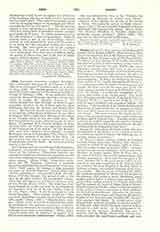

Orsi, GIUSEPPE AGOSTINO, cardinal, theologian, and ecclesiastical historian, b. at Florence, May 9, 1692, of an aristocratic Florentine family; d. at Rome, June 12, 1761. He studied grammar and rhetoric under the Jesuits, and entered the Dominican Order at Fiesole, February 21, 1708. At his profession he received the name of Giuseppe Agostino, having been called in secular life Agostino Francesco. His studies included not only theology, in which he gave particular attention to the Fathers and the great Scholastics, but also the classical and Italian literatures. Having been master of studies for some time at the convent of San Marco at Florence, he was called to Rome in 1732 as professor of theology at the college of St. Thomas, where he was also made prior. He held this position two years, when he became the theologian of Cardinal Neri Corsini, nephew of Pope Clement XII. In 1738 he was appointed secretary of the Congregation of the Index. In 1749 Benedict XIV made him “Magister Sacri Palatii”, or papal theologian, and on September 24, 1759, Clement XIII created him cardinal of the Title of San Sisto. In this position Orsi was an active member of several Congregations until his death. He was buried in his church of San Sisto.
Orsi’s literary activity covered especially dogmatics, apologetics, and church history. His most important works are the following: “Dissertatio historica qua ostenditur catholicam ecclesiam tribus prioribus saeculis capitalium criminum reis pacem et absolutionem neutiquam negasse” (Milan, 1730); “Dissertatio apologetica pro SS. Perpetuae, Felicitatis et sociorum martyrum orthodoxia adversus Basnagium” (Florence, 1728); “Dell’ origine del dominio e della sovranità temporale de’ Romani Pontefici” (Rome, 1742); and “Storia ecclesiastica”—this, his chief work (20 vols., Rome, 1747-61), brought the narrative only to the close of the sixth century; the twenty-first volume, which Orsi had begun, was finished by his former pupil Gio. Bottari (Rome, 1762). The work was afterwards brought up to the year 1587 by the Dominican Fil. Becchetti (new ed. in 42 vols., Venice, 1822; in 50 vols., Rome, 1838). It has been translated into foreign languages. Other writings of Orsi are: “Dissertazione dommatica e morale contra l’uso materiale della parola” (Rome, 1727); “Dimostrazione teologica” (Milan, 1729), in defense of the preceding work on truthfulness (the question of restrictio mentalis); “Dissertatio theologica de invocatione Spiritus Sancti in liturgiis Graecorum et Orientalium” (Milan, 1731); “Dissertationes duae de baptismo in nomine Jesu Christi et de chrismate confirmations” (Milan, 1733)—this was defended by Orsi, in the “Vindiciae dissertationis de baptismo in nomine Jesu Christi” (Florence, 1735), against the attacks of the doctors of Paris; “De concordia gratiae et liberi arbitrii” (Rome, 1734); “De irreformabili Romani Pontificis in definiendis fidei controversiis judicio” (Rome, 1739); “De Romani Pontificis in Synodos oecumenicos eorumque canones potestate” (Rome, 1740). The last two are directed against Gallicanism.
J. P. KIRSCH

